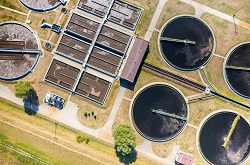Multidrug resistance depends on the ‘sociality’ of antibiotic resistance
The research, published in the journal ‘Antimicrobial Agents and Chemotherapy’, has shown how trace concentrations of antibiotics, such as those found in sewage outfalls, are enough to enable bacteria to keep antibiotic resistance. Alarmingly, the concentrations are much lower than previously anticipated, and this helps to explain why antibiotic resistance is so persistent in the natural environment. Antibiotics are absolutely crucial to modern medicine, but their widespread use and misuse have led to the evolution of strains resistant to the most commonly used antibiotics. Antibiotic resistance has become a major threat to global heath, with multidrug-resistant (MDR) bacteria now being observed on a global scale. As a result, finding new and innovative methods to combat such resistance has become an increasingly prominent feature in the EU’s healthcare policy priorities. ARGs as a source of clinical resistance The new research undertaken at the UK’s University of York through the COEVOCON project has now highlighted how antibiotic resistance genes (ARGs) are a major source of clinical resistance. In particular, the research has described the different mechanisms of resistance as either ‘selfish’ or ‘cooperative.’ A selfish drug resistance only benefits the individual cell with the resistance, whilst a cooperative antibiotic resistance benefits both the resistant cell and surrounding cells whether they are resistant or not. The COEVOCON researchers came to these findings by analysing a plasmid cell called RK2 in Echerichia coli, a bacterium which can cause infectious diarrhoea. RK2 encodes both cooperative resistance to the antibiotic ampicillin and selfish resistance to another antibiotic, tetracycline. They discovered that selfish drug resistance is selected for at concentrations of antibiotic around 100-fold lower than would be expected. This is equivalent to the residues of antibiotics found in contaminated sewage outfalls. ‘The most common way bacteria becomes resistant to antibiotics is through horizontal gene transfer,’ commented Dr Jamie Wood, one of the project researchers based at York. ‘Small bits of DNA, called plasmids, contain the resistance and can hop from one bacteria to another. Worse still, plasmids often contain more than one resistance.’ Michael Bottery, a PhD student actively involved in the research added: ‘There is a reservoir of antibiotic resistance out there which bacteria can pick and choose from. What we have found is some of that resistance can exist at much lower concentrations of antibiotic than previously understood.’ Limitations to the study and need for further research However the researchers have also suggested that there are some limitations to their study. They first point to the fact that there may be other factors in addition to sociality to differences in the fitness reaction norms of the antibiotics, such as the fact that ampicillin is bactericidal and that tetracycline is bacteriostatic. Secondly, the research used exemplars of cooperative and selfish resistance, and more research will be required to test the importance of sociality on the selective conditions for other resistance mechanisms. The COEVOCON project began in January 2013 and will conclude in January 2018. It received approximately EUR 1 230 000 in EU funding. For more information please see: project page on CORDIS
Countries
United Kingdom



